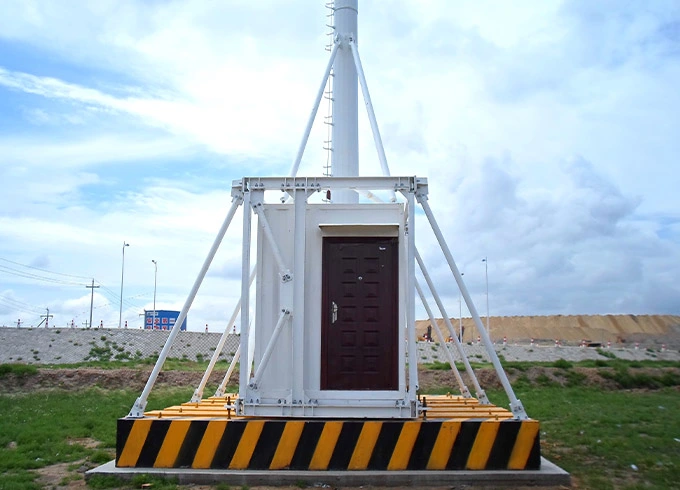230 kV transmission line towers are critical components of modern power grids, designed to efficiently transmit large-scale electricity across vast distances with minimal energy loss. These extra high voltage (EHV) structures typically feature heavy-duty lattice steel or monopole designs, engineered to withstand extreme environmental conditions—including high winds, seismic activity, and temperature fluctuations (-40°C to +45°C). Our 230 kV towers comply with international standards (IEC, IEEE, or ANSI) and incorporate hot-dip galvanized corrosion protection, ensuring 30+ years of reliable performance with low maintenance requirements.
| Voltage | 230KV |
| Tower Type | Suspension Tower, Tension Tower, Dead Tower, Substation Structure |
| Height | 10M-100M |
| Circuit | Single / Double Circuit |
| Material | 1.High strength low alloy structural steel: Q420B which is equivalent with ASTM Gr60 2.High strength low alloy structural steels: Q355B which is equivalent with ASTM Gr50 or S355JR 3.Carbon Structural Steel: Q235B which is equivalent with ASTM A36 or S235JR |
| Welding | AWS D1.1 |
| Surface treatment | Hot dip galvanizing /painting/Powder coating |
| Hot dip galvanization | GB/T 13912-2002, EN ISO 1461,ASTM/A123 or equivalent |
| Welding Standard | AWS D1.1, AS554, AS 4100 standard or equivalent |
| Earthquakeproof Grade | Grade 8 |
| Ice wrapping | 5-10 mm |
| Verticality | 1 / 1000 |
| Working Temperature | - 45°C -+ 45°C |
| Nuts& Bolts | Mainly ISO 898 grade 6.8 and 8.8 bolts for Both Chinese, ISO and DIN standard |
| Working lifespan | 30/50 years |
Building 230 kV transmission towers requires precise engineering and strict adherence to safety protocols. Here’s the step-by-step process ensuring reliability and efficiency:
Conduct topographic surveys to assess terrain.
Perform soil bearing tests to determine foundation depth.
Reinforced concrete or pile foundations are used based on soil stability.
Curing period: 7-28 days (depends on climate and material).
Lattice towers: Pre-fabricated steel sections are bolted on-site.
Monopoles: Lifted via cranes (requires heavy machinery clearance).
Conductors (e.g., ACSR or AAC) are tensioned to prevent sagging.
Polymer/silicone insulators installed to maintain electrical clearance.
Dielectric tests verify insulation integrity.
OSHA-compliant inspections for worker safety (fall arrest systems required).

